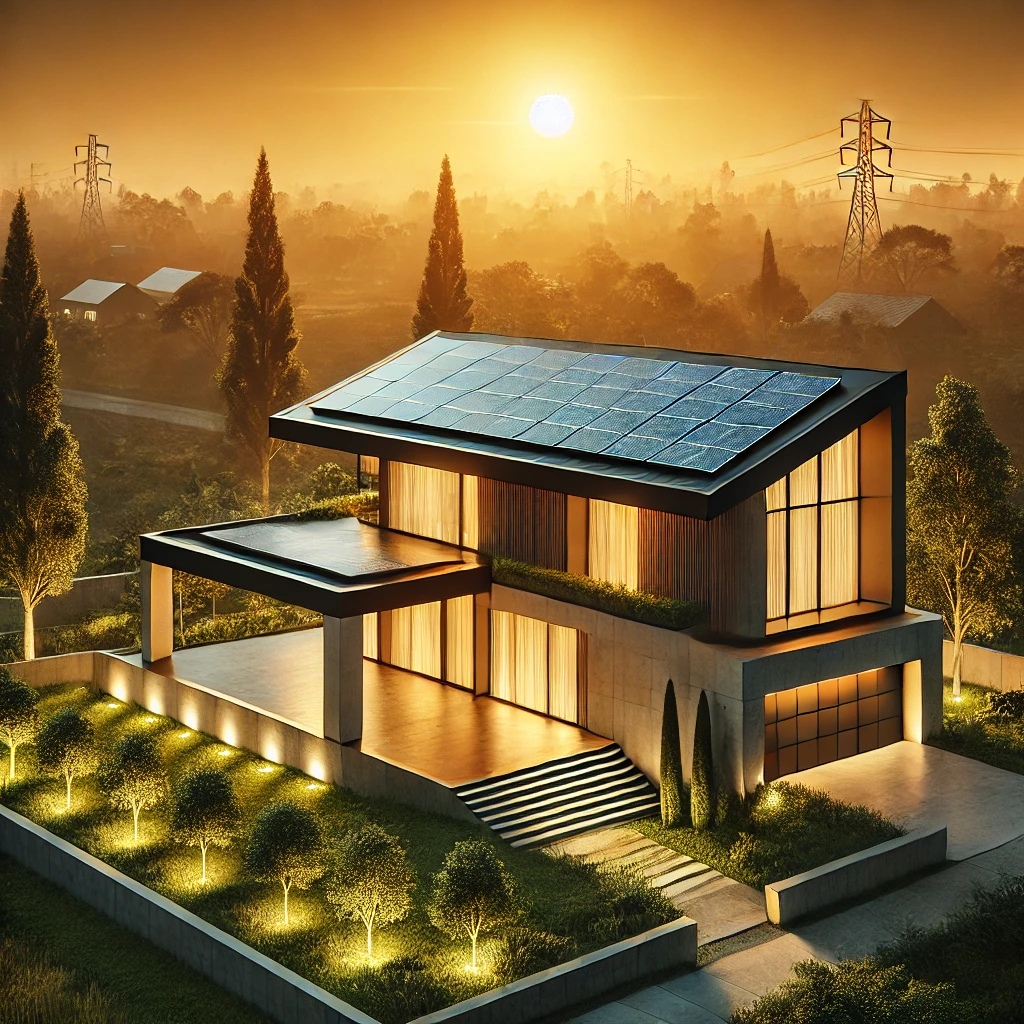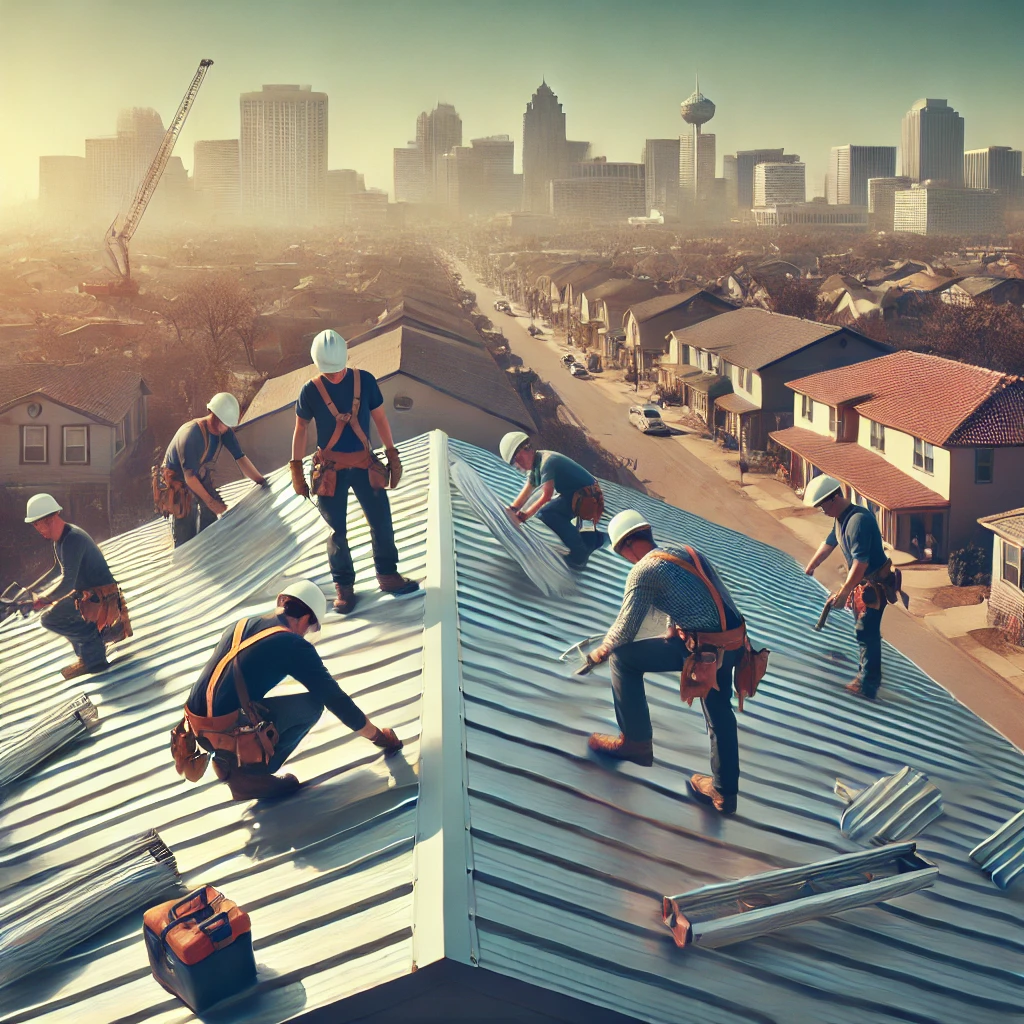Flat roofing has been a go-to choice for homeowners looking to combine practicality with modern design. San Antonio, with its unique climate and architectural preferences, provides the perfect backdrop for flat roofing. This article will delve into the top five benefits of flat roofing in San Antonio, explaining why it could be the ideal choice for your home.
What is Flat Roofing?
Flat roofing, as the name suggests, features a roof with a minimal slope, typically between 1-10 degrees. While it might seem like a new trend, flat roofs have been around for centuries, especially in urban settings where space efficiency is key. The simplicity of its design allows for various functional uses, making it a popular choice in cities like San Antonio.
Importance of Flat Roofing in San Antonio
San Antonio's hot and humid climate, combined with its unique architectural trends, makes flat roofing particularly advantageous. Unlike sloped roofs that might struggle with high winds and heavy rains, flat roofs offer a sturdy, reliable solution. Additionally, the modern look aligns well with contemporary home designs seen throughout the city.
Benefit 1: Cost-Effectiveness
One of the most compelling reasons to opt for flat roofing is its cost-effectiveness. Flat roofs require fewer materials and less labor to install, which directly translates to lower upfront costs. Maintenance is also more straightforward and often less expensive compared to pitched roofs, thanks to easier access and simpler repair processes. Over time, the durability of modern flat roofing materials ensures that you won't be facing frequent repair bills.
Benefit 2: Space Efficiency
Flat roofs offer an additional advantage that sloped roofs can't match: usable rooftop space. This space can be transformed into a rooftop garden, a patio, or even an area for solar panels, making the most of San Antonio's sunny weather. The extra space not only enhances the functionality of your home but also adds value and aesthetic appeal.
Benefit 3: Energy Efficiency
Flat roofing can significantly contribute to energy efficiency. By using materials that offer excellent insulation properties, flat roofs help keep your home cool during San Antonio's hot summers. This reduction in heat transfer means your air conditioning system won't have to work as hard, leading to lower energy bills. Moreover, the flat surface is ideal for installing solar panels, further boosting your home's energy efficiency.
Benefit 4: Aesthetic Appeal
The clean, modern lines of a flat roof can elevate the overall appearance of your home. Flat roofing offers various customization options, allowing homeowners to choose materials and colors that complement their home's style. Whether you prefer a minimalist look or something more eclectic, flat roofing can provide the aesthetic versatility you need.
Benefit 5: Ease of Maintenance
Maintenance is a crucial consideration for any roofing system, and flat roofs excel in this area. Their accessibility makes it easier to conduct regular inspections and address any issues before they escalate. Furthermore, flat roofs are less prone to wind damage, which is a common concern in areas with severe weather conditions.
Types of Flat Roofing Materials
Flat roofing is not a one-size-fits-all solution. Various materials are available, each with its own set of benefits:
- Modified Bitumen: Known for its durability and resistance to harsh weather conditions.
- Built-Up Roofing (BUR): A traditional choice that offers multiple layers of protection.
- Single-Ply Membrane (EPDM, TPO, PVC): Popular for their flexibility and ease of installation.
Comparing Flat Roofing with Other Roofing Types

When considering flat roofing, it's essential to compare it with other options, such as pitched roofs. While flat roofs are generally more affordable and easier to maintain, pitched roofs might offer better drainage and a more traditional look. However, in San Antonio's climate, flat roofs often outperform pitched roofs in terms of durability and energy efficiency.
Installation Process of Flat Roofing
The installation process of a flat roof involves several key steps, starting with the preparation of the roof deck, followed by the installation of insulation layers, and finally, the application of the roofing material. Professional installation is crucial to ensure the longevity of the roof, as any errors during installation can lead to issues like water pooling and leaks.
Common Issues with Flat Roofing
While flat roofs offer many benefits, they are not without challenges. Common issues include poor drainage, which can lead to ponding water, and potential leaks if the roof is not properly maintained. However, with the right preventive measures, these problems can be minimized.
Preventive Measures for Flat Roofing
Regular inspections and maintenance are vital for the long-term performance of flat roofs. Ensuring that the drainage system is functioning correctly and applying protective coatings can help prevent common issues. In addition, professional inspections can identify potential problems before they require costly repairs.
Maintenance Tips for Flat Roofs
To keep your flat roof in top condition, consider the following maintenance tips:
- Seasonal Inspections: Check for debris, pooling water, and signs of wear and tear.
- Professional Maintenance: Schedule regular maintenance with a roofing professional to address any issues early.
- Drainage Maintenance: Ensure gutters and drains are clear to prevent water buildup.
Flat Roofing and Real Estate Value
Investing in a flat roof can positively impact your home's real estate value. The additional space and modern aesthetic appeal to potential buyers, especially in urban areas like San Antonio. Moreover, the energy efficiency and low maintenance costs associated with flat roofs can make your home more attractive to eco-conscious buyers.
Expert Insights on Flat Roofing
Roofing professionals often highlight the growing trend of flat roofing in urban environments. According to experts, advancements in materials and installation techniques have made flat roofs more durable and efficient than ever before. As a result, flat roofing is expected to continue gaining popularity, especially in cities like San Antonio.
Case Studies: Flat Roofing in San Antonio

Several San Antonio homeowners have successfully implemented flat roofs in their homes, experiencing firsthand the benefits outlined in this article. From creating rooftop gardens to enjoying lower energy bills, these case studies demonstrate the practical advantages of flat roofing in a real-world context.
Common Misconceptions About Flat Roofing
There are several misconceptions about flat roofing, such as the belief that they are prone to leaking or that they can't handle heavy rainfall. In reality, with proper installation and maintenance, flat roofs can be just as durable and reliable as pitched roofs.
Flat Roofing in San Antonio’s Building Codes
Adhering to local building codes is essential when installing a flat roof in San Antonio. These codes ensure that the roof is built to withstand local weather conditions and meet safety standards. Working with a professional roofing contractor can help you navigate the permitting process and ensure compliance with all relevant regulations.
Conclusion
Flat roofing offers numerous benefits for San Antonio homeowners, from cost savings to increased space efficiency and aesthetic appeal. By understanding these advantages, you can make an informed decision about whether flat roofing san antonio is the right choice for your home. If you're considering a new roof, don't hesitate to consult with a professional to explore your options further.